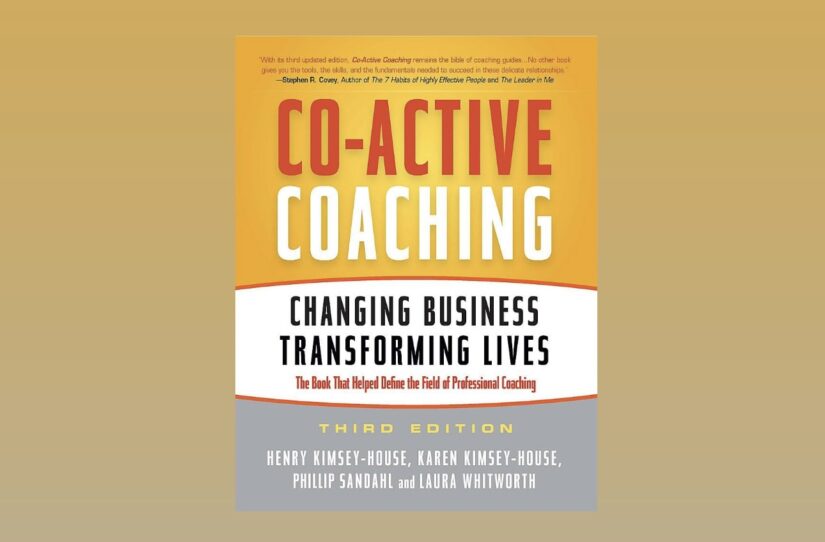Empower Success Through Co-active Coaching Techniques
The book club’s latest selection is the fourth edition of “Co-Active Coaching,” authored by Henry Kimsey-House, Karen Kimsey-House, Phillip Sandahl, and Laura Whitworth. This book is widely recognized as a seminal work in the coaching field, often referred to as “the bible of coaching guides”. It provides a detailed exploration of transformative conversations in both professional and personal settings.
A Comprehensive Guide to Coaching
“Co-Active Coaching” stands out in the realm of coaching literature. The reader’s engagement begins from the very first page of the preface and continues through the last chapter, spanning a total of twelve chapters. These chapters methodically guide the reader through the entire spectrum of the co-active coaching process, from basic principles to their practical application. The book is founded on the belief that every individual inherently possesses strength and the potential for personal growth. It emphasizes that every situation holds possibilities and that individuals have the power of choice.
The Fundamental Elements of Coaching
The initial chapters of the book lay the groundwork for understanding co-active coaching. The authors introduce four cornerstones that establish the foundation of the coaching relationship. These cornerstones, encompassing aspects like fulfillment, balance, and process, are explored through various contexts such as listening, intuition, curiosity, action, and self-management. The authors assert that coaching transcends mere methodology and is fundamentally about fostering a meaningful relationship.
Exploring Practical Coaching Techniques
In the subsequent chapters, the book delves into the practical aspects of co-active coaching. It discusses various levels of listening and explores essential coaching skills like developing intuition, fostering curiosity, and maintaining authenticity. The book also addresses self-management for coaches, providing guidance on how to remain connected and engaged during coaching sessions.
Balancing Fulfillment and Process
Chapters eight through ten focus on the processes of fulfillment, balance, and emotional journey in coaching. The authors discuss the importance of aligning coaching with the coachee’s values and life goals. They redefine balance not as equal distribution of attention to all life aspects but as a conscious choice of life direction. The book also sheds light on handling emotions during coaching, recognizing them as a valid form of expression.
Envisioning the Possibilities of Coaching
The final chapters bring together all the concepts and explore the potential of co-active coaching. They challenge conventional perspectives, advocating for a focus on strengths, potential, and positive outcomes. The authors envision a transformative coaching approach that values learning and growth over comfort and appearance.
Reflections from the Book Club Webinar
A participant from a related webinar reflected positively on the insights gained from the book, mentioning how the implementation of these concepts in real-life coaching scenarios yielded impressive results. The book club’s webinars have been lauded for their value, with members appreciating the mentorship, shared experiences, and diverse perspectives on the book’s content.
Conclusion: Embracing the Journey of Transformational Coaching
In conclusion, “Co-Active Coaching” is not just a book; it’s a journey into the depths of what effective coaching entails. It stands as a testament to the transformative power of coaching when grounded in understanding, empathy, and proactive engagement. The authors, Henry Kimsey-House, Karen Kimsey-House, Phillip Sandahl, and Laura Whitworth, have meticulously crafted a guide that goes beyond the surface of coaching methodologies, delving into the essence of human potential and growth.
The book’s strength lies in its comprehensive approach, covering every aspect from the fundamentals of coaching to the nuanced skills required for effective practice. It’s a resource that speaks both to the novice seeking to understand the basics of coaching and the experienced professional looking to deepen their expertise. The emphasis on values, balance, and emotional intelligence is particularly noteworthy, offering a holistic perspective that is often missing in other coaching guides.
Furthermore, the real-world applicability of the concepts discussed in the book is a significant highlight. The anecdotes and experiences shared by participants in the associated webinars underscore the practicality and effectiveness of the co-active coaching approach. It’s inspiring to see how theories and principles laid out in the book translate into tangible, positive outcomes in people’s lives. “Co-Active Coaching” challenges the reader to think differently about coaching. It encourages a shift from a problem-solving mindset to one that is centered around unlocking a person’s inherent potential. This book is an essential read for anyone involved in coaching, mentoring, or personal development. It provides the tools and insights necessary to foster a coaching relationship that is not just productive, but also deeply rewarding and transformative.
